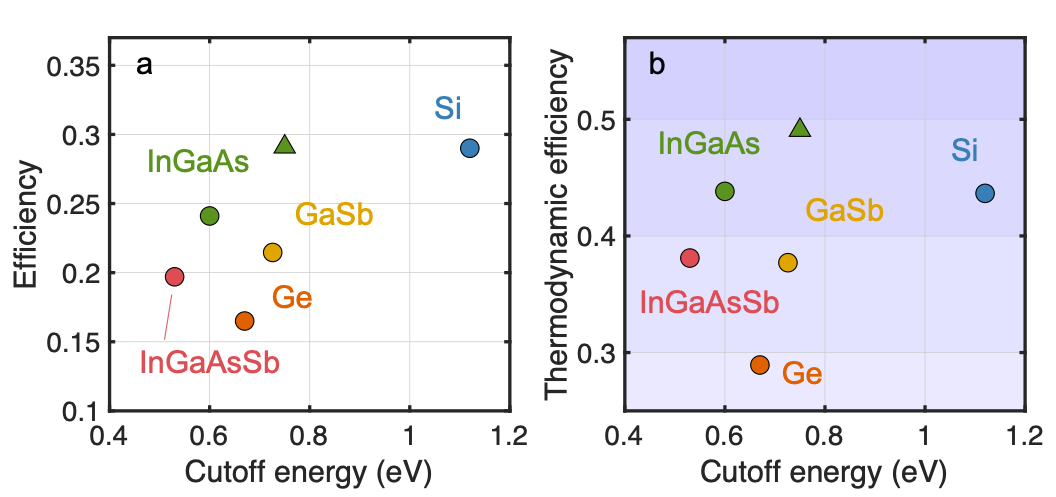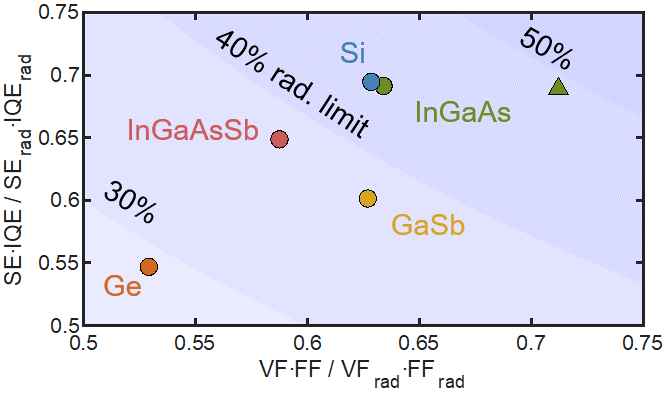TPVs are similar to solar cells in many ways. However, a database similar to NREL’s “Best Research-Cell Efficiency Chart” did not exist for TPVs, until the Lenert Research Group created one!
To do so, we surveyed experimental literature on thermophotovoltaics (TPVs) dating back to the 1960s. We analyzed how leading TPV pairs perform across four multiplication factors of the overall heat-to-electricity efficiency: spectral efficiency (SE), quantum efficiency (QE), voltage factor (VF), and fill factor (FF). Because experimental test conditions vary significantly across the literature, it was important to compare the data to theoretical limits, imposed by thermodynamic laws, in order to isolate for the role of the materials and device designs. What emerged was a more complete understanding of which aspects of current TPVs are favorable and where opportunities for improvements remain. The main results are summarized in the following figures. Please see our publication in Joule (https://doi.org/10.1016/j.joule.2020.06.021) for a description of the results and research methodology.
Historical Progression of Best Efficiencies

Present Best Efficiencies

Performance Metrics of Leading TPV Pairs
Ongoing work: An online platform for up-to-date reporting and TPV design
As part of our NSF-funded Project TPV (CBET-2038441) we will develop an online platform that facilitates the sharing of experimental TPV data and design of TPV devices. This Project TPV platform will consist of three modules:
- Explore. Users will be able to interact with the platform to Explore leading approaches that have been identified by comparing each conversion step to its respective, experiment-specific thermodynamic limit. Meaningful comparisons will allow researchers to learn which aspects of current TPVs are favorable and to translate improvements from one material system to another, accelerating progress in the field.
- Design. The Design module will let users predict the performance of existing and hypothetical architectures using a TPV quasi-one-dimensional simulation tool (TPV-Q1D). TPV-Q1D will advance fundamental understanding of energy loss mechanisms in TPV cells and bridge the existing gap in open-access tools by accounting for variable emitter parameters, dopant-mediated parasitic absorption, spatially dependent photoexcitation and recombination.
- Report. The Report module will allow users to upload the results of their experimental measurements, including dark and illuminated current-voltage characteristics and spectral properties of emitters and cells. Upon verification by the project team, these data will become available in the Explore module, closing the design loop.
We are currently testing each of the modules individually. Our plan is to release a Beta version later this Summer (2020). Stay tuned!
Broader Impact: To engage the broader community, guided learning activities will show users how to interact with Project TPV to understand fundamental energy conversion steps and design principles that have led to major improvements over the years.




